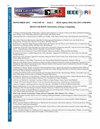基于蒙特卡罗模拟的顺序测试策略在听觉稳态反应检测中的比较
IF 1.3
4区 工程技术
Q3 COMPUTER SCIENCE, INFORMATION SYSTEMS
引用次数: 0
摘要
使用顺序测试策略有助于缩短自动检测听觉稳态反应(ASSR)的时间,这是一种常见的方法。然而,重复测试的应用会导致假阳性率上升。基于蒙特卡洛的策略被用来克服这一障碍。尽管有多篇论文介绍了此类策略,但在文献中并未找到全面的比较。所选策略基于蒙特卡罗模拟计算临界值,并为比较目的进行了忠实复制,然后改变测试应用参数以建议优化。除了与 2013 年相关的策略会将误报率提高到 15.3% 之外,其他策略的检测率和/或检测速度均有所提高。其他策略则将误报率控制在一定范围内。帕累托曲线比较了各策略的优化情况,结果显示,修改后的 2015 年策略的性能比原始参数高出 5.6%。自动检测 ASSR 的能力随每种策略的实施而提高,但并非所有策略都能控制误报率(2013 年和 2015 年)。2015 年修改后的策略在最短的时间内获得了最高的检测率。本文章由计算机程序翻译,如有差异,请以英文原文为准。
Comparison of sequential test strategies based on Monte Carlo simulations in the detection of auditory steady-state responses
It is common to use sequential testing strategies to help reduce the time of automated detection of an auditory steady-state response (ASSR). However, the application of repeated tests leads to an increase of false positive rate. Monte Carlo-based strategies are used to overcome this obstacle. Despite several paper could be found describing such strategies, no comprehensive comparison was found in the literature. The chosen strategies are based on Monte Carlo simulations to calculate critical values and were faithfully replicated for comparison purposes, and then the test application parameters were varied to suggest an optimization. The detection rate and/or the detection speed improved with each implemented strategy, except for the one related to the year 2013, which increased the false positive rate to 15.3%. The other strategies kept the false positive rate under control. The Pareto curves compared the optimizations of the strategies and revealed that the modified 2015 strategy had the performance achieving 5.6% higher than the original parameters. The automated detection of ASSR improved with each implemented strategy, but not all of them kept a controlled false positive rate (2013 and 2015). The 2015 modified strategy had the highest detection rate in the shortest time.
求助全文
通过发布文献求助,成功后即可免费获取论文全文。
去求助
来源期刊

IEEE Latin America Transactions
COMPUTER SCIENCE, INFORMATION SYSTEMS-ENGINEERING, ELECTRICAL & ELECTRONIC
CiteScore
3.50
自引率
7.70%
发文量
192
审稿时长
3-8 weeks
期刊介绍:
IEEE Latin America Transactions (IEEE LATAM) is an interdisciplinary journal focused on the dissemination of original and quality research papers / review articles in Spanish and Portuguese of emerging topics in three main areas: Computing, Electric Energy and Electronics. Some of the sub-areas of the journal are, but not limited to: Automatic control, communications, instrumentation, artificial intelligence, power and industrial electronics, fault diagnosis and detection, transportation electrification, internet of things, electrical machines, circuits and systems, biomedicine and biomedical / haptic applications, secure communications, robotics, sensors and actuators, computer networks, smart grids, among others.
 求助内容:
求助内容: 应助结果提醒方式:
应助结果提醒方式:


